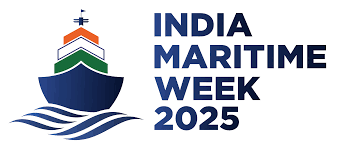
Repairing for Resilience: India’s drive to build inland ship repair network
NEW DELHI: India’s inland waterways are witnessing a defining transformation — one that promises to reshape the nation’s transport, trade, and logistics landscape from within. With a renewed thrust on developing ship repair and maintenance infrastructure, the government’s vision under Maritime Amrit Kaal Vision 2047, is steadily taking shape.
The recent announcement of Ship Repair Facilities (SRFs) at Patna and Varanasi on the Ganga (National Waterway-1) — along with the upcoming SRF at Pandu, Guwahati for the Brahmaputra (NW-2) and Barak (NW-16) — marks more than just infrastructural progress. These developments represent a major stride toward making Bharat Atmanirbhar in its maritime and inland vessel ecosystem.
The Inland Waterways Authority of India (IWAI), the nodal agency under the Ministry of Ports, Shipping and Waterways (MoPSW), has been at the forefront of driving integrated and sustainable development across the National Waterways network.
With the operationalisation of the Patna and Varanasi SRFs, the inland Ganga region will have access to modern facilities capable of repairing a wide range of vessels — from cargo carriers to passenger ferries. This will eliminate the need for such vessels to travel to distant coastal docks for maintenance, resulting in significant savings in time and cost while generating employment, fostering skill development, and stimulating industrial growth across Uttar Pradesh and Bihar’s riverine corridor.
Equally transformative is the upcoming SRF at Pandu, Guwahati, poised to become the lifeline of inland vessel maintenance for the entire Northeast. Once operational, the facility will enable efficient turnaround of both government and private vessels operating on NW-2 and NW-16. It will bolster trade and transport connectivity between the Northeast and neighbouring countries such as Bangladesh and Bhutan, reinforcing India’s Act East and Neighbourhood First policies with robust logistical support.
Together, these ship repair hubs — Patna, Varanasi, and Pandu — represent a new model of distributed maritime growth. Equipped with dry docks, slipways, workshops, and specialised machinery, they will also support smaller localised floating repair units and mobile repair teams. By decentralising critical infrastructure from the coastline to the hinterland, India is ensuring that its inland waterways evolve from mere transport routes into engines of regional prosperity.
IWAI has already spearheaded the development of world-class Multi-Modal Terminals at Varanasi, Sahibganj, and Haldia, along with intermodal terminals that serve as crucial nodes for cargo transfer and passenger movement. The vision is clear: to establish a self-sustaining inland vessel ecosystem where ships can be built, maintained, and repaired locally — reducing dependence on coastal facilities and foreign services.
Beyond immediate repair and maintenance needs, these facilities are laying the foundation for a shipbuilding and ancillary industry network across the Ganga and Brahmaputra basins. They encourage MSME participation in component manufacturing, steel fabrication, marine electrical works, and logistics, creating jobs, fostering entrepreneurship, and nurturing technical skills among local youth. As India advances through its AmritKaal, such regional industrial clusters will become the bedrock of economic self-reliance and growth.
The SRFs at Patna and Varanasi are strategically designed to cater to vessels operating along the Haldia–Varanasi corridor under the Jal Marg Vikas Project (JMVP) — a corridor that has already witnessed substantial cargo traffic growth. The addition of modern SRFs will enhance vessel reliability, enable efficient maintenance scheduling, and minimise downtime — translating into predictable logistics chains and improved utilisation rates, thereby attracting greater private investment into the IWT sector.
Environmentally, these facilities exemplify the government’s commitment to green and sustainable maritime practices. Each SRF incorporates waste management systems, energy-efficient technologies, and water recycling mechanisms — in alignment with Prime Minister Narendra Modi’s vision of a Blue Economy that harmonises economic growth with ecological stewardship.
Aligned with Maritime Amrit Kaal Vision 2047, these initiatives form part of India’s roadmap to emerge among the top five global maritime nations. The Vision aims to transform India into a design–build–finance–own–repair–recycle powerhouse, expanding the maritime value chain from innovation in ship design to sustainable ship recycling. The SRFs at Patna, Varanasi, and Pandu are thus not isolated projects but integral components of this broader transformation — providing the inland shipping ecosystem with its own technical and industrial backbone.
As the countdown to India Maritime Week 2025 (October 27-31) begins, the message from the heartland and the Northeast is clear: India’s inland waterways are no longer peripheral—they are central to the nation’s maritime destiny.
Source : The Statesman
